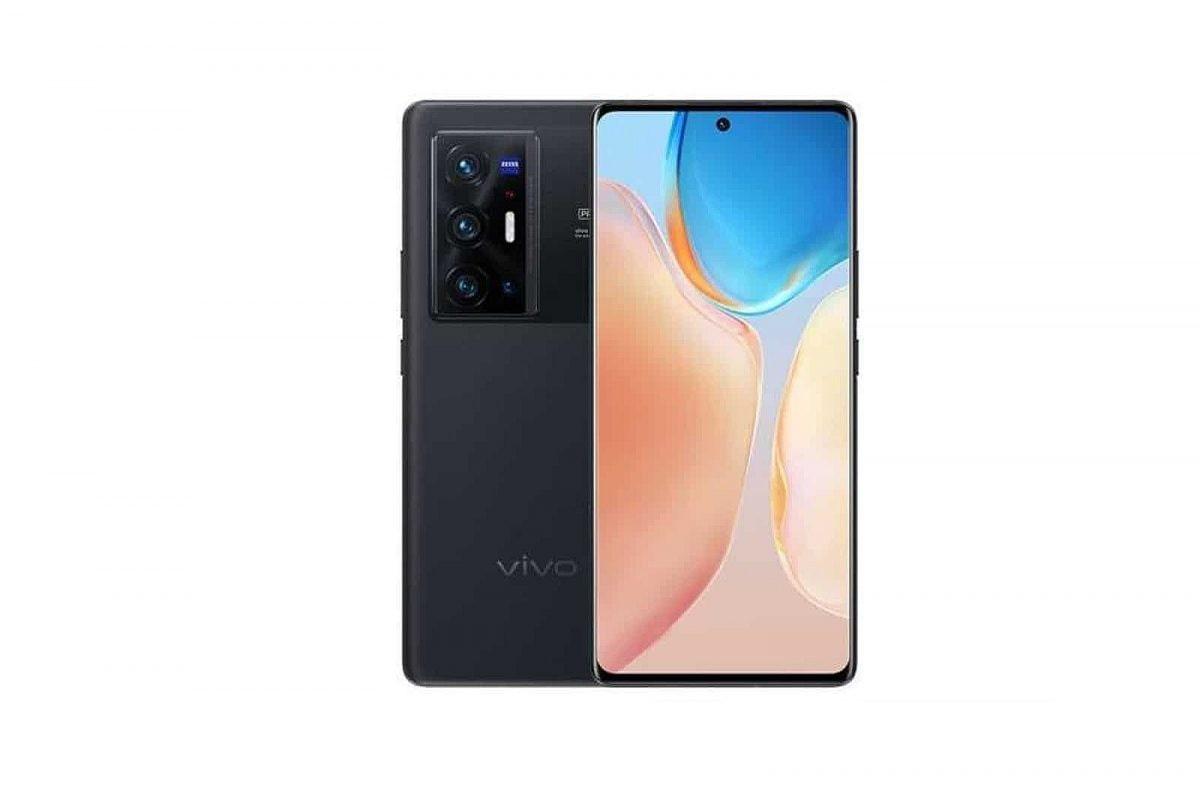It is arguably not rare any longer to see a buyer willing to spend big bucks on a smartphone. This, however, may not be entirely down to features that they offer. Today, a smartphone delivers a statement that introduces you — it is the equivalent of celebrity airport looks, the one thing that people around you notice when you’re in a crowd. It is validation and gratification rolled into one, and the numbers somewhat back up my hypothesis as well. Case in point: Apple’s lead in the premium segment, even in a country as value conscious as India.
Contrary to popular belief, though, even an ‘expensive’ phone offers value. The latter isn’t absolute, although value is seldom an absolute figure. For someone who frequents high society parties, a smartphone that costs about Rs 80,000 has great value. However, there are major conditions that need to be fulfilled, which go beyond how fast the phone is, how great its battery life is, or how extensive its telephoto zoom is. The question, therefore, is this — if Vivo delivered the world’s greatest smartphone to you and asked you to pay Rs 80,000 for it, would you?
The perception conundrum: This decides if you read this review further
If you’ve hung around to read this review even after the 200-word lecture on life (please excuse me), the next hundred will settle if you need to know more about the Vivo X70 Pro Plus – or not. Simply put, if you care about people noticing you for the smartphone you own, you’ll likely look elsewhere (perhaps wait for our upcoming review of the Apple iPhone 13 Pro). If you’re a hardcore, Android-loving geek, but don’t mind some cred points in non-geek circles too, you’ll most likely be looking at a OnePlus (or maybe even a Samsung) phone. If, however, you like experimental hardware that tries something innovative, and don’t care about the brand name on your phone, you must read on.
Gimbal stabilisation on Vivo X70 Pro Plus: The reason to buy the phone for
Straight off the bat, if there’s anything that you may want to consider buying the Vivo X70 Pro Plus for, it is the gimbal stabilisation feature. Typically, a motorised stabiliser gimbal features a gyroscope and a motor. The former reads your lateral and vertical movement, and the latter tries to negate this movement by making your camera move the other way. The result, in typical, traditional cameras, is smooth movement the way you’d see in movies.
In the Vivo X70 Pro Plus, the company has tried to build a miniaturised version of this into a body that is just over half a foot tall, and less than 9mm in thickness. On paper, logic states that since the X70 Pro Plus has much lesser bulk (213g weight) and bears smaller sensors than a typical camera, this miniaturised gimbal should work. In the real world, I’m happy to report that the gimbal does work, indeed – at least for the most part.
In the Vivo camera app, you get a new ‘Horizontal Line’ stabilisation mode. This can be enabled alongside a virtual spirit level that uses the phone gyroscope and magnetometer to gauge your level from the ground. This can help you straighten your camera perfectly, and while the quivering bubble of the virtual leveller may look confusing at first (at least to those not used to professional video shooting), you figure out how it works soon enough. Once you’re level and start shooting, you get smooth, stabilised tracking shots where you follow a character down a corridor, or take steady pans and tilts of your surroundings.
In other words, it just works. There is admittedly a huge sensor crop in this mode, which means that you do not get the widest field of view when the ‘Horizontal Line’ stabilisation mode is enabled. To negate this, Vivo has offered the gimbal stabilisation on the ultra-wide camera only, and the cropped result gives you a near-standard field of view. You have to therefore create your frame accordingly, and this limitation means you cannot change fields of view in gimbal stabilisation, you’d need to reshuffle your frame quite a bit when you actually shoot. Once you do, the level of smoothness is practically better than any other phone camera that I have personally experienced, and certainly better than any other commercial camera in the market right now.
Is it truly ‘pro’, though? During my days with the Vivo X70 Pro Plus, I shot videos with it alongside a Canon EOS M50 fitted to a Zhiyun Weebill S handheld gimbal rig. The results that the smartphone produces are telling in terms of their stabilisation, and it’s safe to say that the footage shot here can be used in a semi-pro, indie film. In process, the X70 Pro Plus makes devices such as the often annoying and buggy DJI Osmo Mobile handheld stabilised gimbals mostly irrelevant for itself.
This, however, begs the question of whether amateur and guerilla filmmakers would actually trust this phone to do the trick over, say, a rig comprising a new generation iPhone and a handheld stabiliser gimbal.
Camera performance: Zeiss adds to its USP, but niggles persist
Starting from where we left off above, this is where the Vivo X70 Pro Plus loses out. The horizontal gimbal stabiliser mode works only at 30fps at 1080p resolution, which is too limiting a cap for making a professional movie. Even if you can work around the sensor crop, the frame rate limitation is a big restriction of styles you can deploy in post processing your film. Given that I never shoot at below 60fps, and would rather drop down on resolution than frame rates, I found this to be a debilitating aspect that as good as outdoes the good stabilisation performance.
Thankfully, there is some respite in the form of general details, tonal accuracy of colours and overall dynamic range – in both photography and videography. Both the 50MP main camera (1/1.3-inch sensor, f/1.6 aperture lens) and the 48MP ultra-wide angle camera (1/2-inch sensor, f/2.2 aperture lens) produce good levels of fine details, while preventing colours from being too skewered or oversaturated. While the 2x telephoto (12MP, 1/2.9-inch sensor, f/1.6 lens) results are quite surprisingly decent, the 5x optical zoom (8MP sensor, f/3.4 lens) results are strictly average. There is a clear lack of details, but then, you’re unlikely to use 5x telephoto everywhere, every day.
Vivo uses a custom V1 chip in the X70 Pro Plus to offer its own take at computational photography, coupled with Zeiss enhancements. The results are a bit of a mixed bag – while night scenes are brightened well and consistently, Vivo doesn’t quite succeed at noise suppression. As a result, the camera loses a fair share of details in dim or high contrast light contrast lights. The company claims that a custom, Zeiss T* coating on all lenses can reduce lens flare, and I’m happy to report that in my time with it, I haven’t seen any lens flare issue at any point.
There are four simulated Zeiss modes that are very similar to Fujifilm and its film simulation modes. You get four Zeiss styles – Biotar, Sonnar, Planar and Distagon, each signifying a different bokeh style to simulate iconic Zeiss lenses. It’s mostly a gimmick, but is fun enough to have around. All things considered, the Vivo X70 Pro Plus can be considered to be a pretty good overall camera phone – with its gimbal stabilisation being totally worth it. The fact that all the other camera units support optical stabilisation (OIS) too is an added boon.
Design and build quality: Looks confusing, but built well enough
Beyond the cameras, the X70 Pro Plus goes under the aesthetic hammer, and it is a bit confusing, to be honest. The matte, textured back looks great from afar, but when you hold it, there’s a hint of inexpensive plastic – something that you would not want in a premium phone. Nevertheless, it doesn’t catch fingerprints, and the side rim of the phone is an impressive shade of near-matte black – hence making it look good again.
Vivo must be commended for having created a sleek body, despite the sheer size of the phone. While it is heavy, the distributed weight means that you do not really always feel the heft – and as a result, the X70 Pro Plus has that typical, slightly hefty feel that I prefer premium phones to offer. It feels substantial and well made, which is undoubtedly great. Despite its size, the buttons are placed as ergonomically as you’d hope for.
While the large camera unit doesn’t bother me, the reflective ‘ceramic window’ beside it does. It’s not plain reflective, which restricts it from being a self portrait viewfinder. As a result, it is clearly a design element, and it feels as if the Vivo design team ran out of legitimate ideas for just this patch, and made do with whoever came up with the quickest idea. It is this that makes a potentially good design rather confusing.
Display and software: Superb screen, amateur interface
The 6.78-inch, LTPO AMOLED display supports a billion colours and HDR10+, and produces 1,500 nits peak brightness as per official data. The 2K+ display is rich, sharp, colourful, saturated and vibrant, and is curved at both the edges. This makes it an excellent display to watch stuff on, and the 120Hz adaptive refresh rate further sweetens the deal. You can adjust the slightly saturated colours for yourself to get a good colour balance from it. From night-time viewing to general usage, the display on the Vivo X70 Pro Plus is a great one.
The software, however, is equally bleh. The firmware’s glitches include a skewered auto brightness adjuster, but more than anything else, it is the lack of careful touches that make Vivo’s OS look silly – and unbecoming of featuring in such an expensive smartphone. For instance, the gap between the bottom row of static icons and the first row of icons on the home screen have too big a gap if you reduce the size of the app icons. Such elements of the interface should adjust dynamically, but here, they do not.
Other glitches such as an empty, black strip at the top of the settings menu do nothing to inspire confidence or excitement, and I wish Vivo had worked a bit more on the phone’s software design to justify this premium phone.
Performance and battery life: As you’d hope from a flagship
If there is one thing that does justify the premium phone that the X70 Pro Plus is, it is performance. Incidentally, it is the first smartphone in India to feature the Qualcomm Snapdragon 888 Plus, and houses 12GB RAM (with 4GB virtual RAM) and 256GB storage. The storage option is rather limiting for a flagship phone, but apart from that, everything works just how you’d expect of a flagship phone.
The Snapdragon 888 Plus produces benchmark results right in line with flagship Android phones such as the Samsung Galaxy S21 Ultra, although it is far away from Apple’s reported Geekbench 5 scores. For reference, it scores approximately 1,125 points in single-core and 3,550 points in multi-core test on the Geekbench platform. This reflects in reality, you do not face any hiccup with any regular app and how smoothly they run. Games produce good graphics too, and even challenging titles such as Elder Scrolls: Blades produce high frame rates to make the most of the 120Hz display. There aren’t any major heating issues to report here either – be it with stabilisation enabled, or during extended gaming sessions.
As for its battery life, the Vivo X70 Pro Plus feels like it drains the battery pretty fast. This is true if you set the resolution and refresh ratio of the display to peak, and with heavy usage, you can drain the phone out within 7 hours. If you shoot a lot of videos, the X70 Pro Plus will die even faster. Thankfully, though, the bundled 55W fast charger gives you almost half the battery power within 20 minutes, and that should be enough to see you through a full work day.
Verdict: Worth shortlisting, if you shed inhibitions
The Vivo X70 Pro Plus is an interesting flagship phone, for sure. It has a good gimbal stabiliser, a fantastic display and top-notch performance to offer, while its downsides include annoying limitations to how you shoot stabilised videos, average battery life and a careless UI. Even with all this, if you don’t want a OnePlus 9 Pro or a Samsung Galaxy S21 series smartphone, but still desire a flagship Android experience, the Vivo X70 Pro Plus is definitely worth considering.
You may not get the kind of brand reception that you would if you buy one of the two rivals mentioned above, or even the new Asus ROG Phone 5. But, if you’re more fixated on videography than other stuff, you’re probably not looking for such kinds of validation, anyway.




